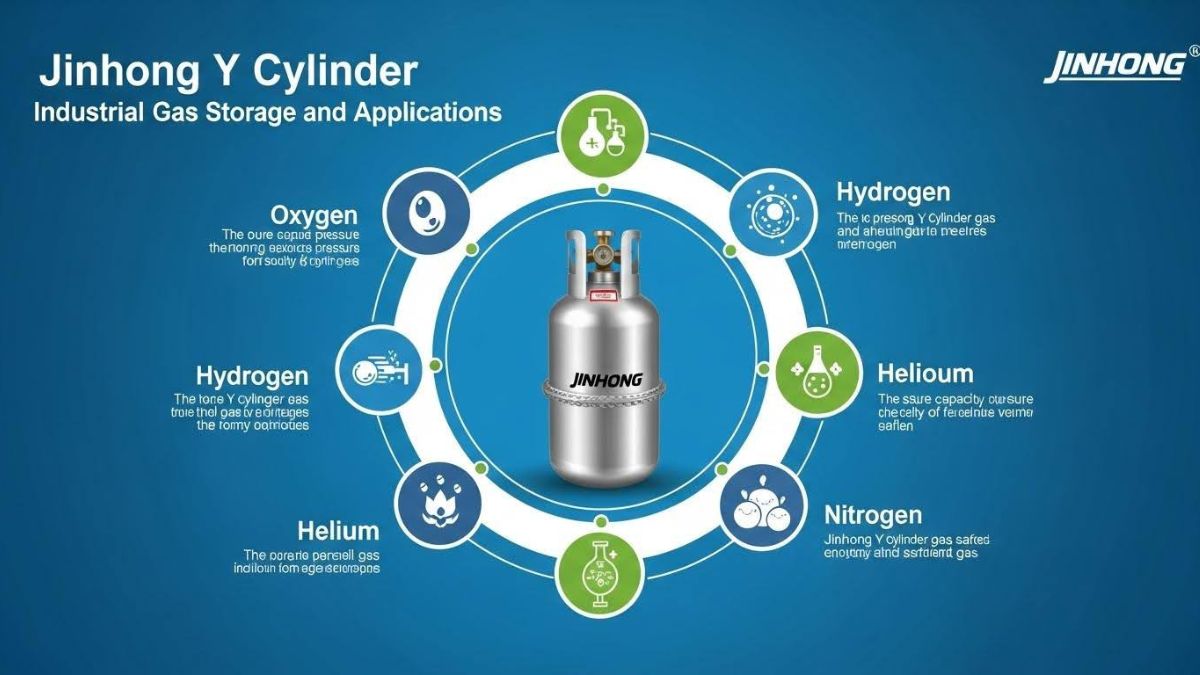TOPIC
Fun Facts About Caskets You Didn’t Know: Inside the $20 Billion Funeral Industry’s Best-Kept Secrets

Let’s talk about something most people avoid – caskets. Yeah, I know it sounds a bit morbid, but trust me, there are some seriously interesting fun facts about caskets you didn’t know that’ll blow your mind.
Did you know the funeral industry is worth a whopping $20 billion? That’s more than the value of most Hollywood studios combined! But here’s the thing – most folks end up overpaying because they’re not clued in on the industry’s inner workings.
Take Overnight Caskets, for example. They’re shaking up the traditional funeral industry by offering direct-to-consumer caskets. Pretty smart, right? It’s like the Tesla of the casket world, cutting out the middleman.
I’ve dug deep (pun intended) into the world of caskets, and what I found is fascinating. From secret features to mind-boggling materials, these fun facts about caskets you didn’t know will change how you think about these final resting places.
The Evolution of the Modern Casket
Here’s a fun fact about caskets you didn’t know: they started out way different than what we see today. Back in the 1700s, people used simple wooden boxes called coffins – basically six-sided boxes that were wider at the shoulders and narrower at the feet, looking kind of like your body’s shape.
But everything changed during the American Civil War. With soldiers dying far from home, the need for preservation and transportation led to some serious innovation. Metal caskets entered the scene, and undertakers started becoming actual professionals. The rectangular casket design we know today? That became popular because it looked more like a bed, making the whole thing feel less creepy for families.
The real game-changer came during the Industrial Revolution. Mass production kicked in, and suddenly caskets weren’t just plain wooden boxes anymore. Manufacturers started using fancy materials like mahogany, bronze, and copper. They even added plush interiors and decorative handles – talk about luxury!
Here’s something wild: by the late 1800s, you could actually order a casket from the Sears catalog, just like ordering a new iPhone today. This totally disrupted the traditional funeral industry and made caskets more accessible to everyone.
And get this – the term “casket” itself was deliberately chosen over “coffin” because it also meant “jewelry box” in those days. Funeral directors thought it sounded more pleasant and less morbid. Pretty clever marketing, right?
Surprising Price Secrets
Ready for some shocking fun facts about caskets you didn’t know? The median cost of a funeral with a casket has shot up to over $9,400 in 2024. And here’s the kicker – that’s rising faster than regular inflation!
Want to know something that’ll make your jaw drop? Casket markups can reach up to 300-500% of their wholesale price. A casket that costs a funeral home $1,000 might sell for $4,000 or more. Yeah, you read that right!
But here’s a secret the industry doesn’t advertise: you don’t actually have to buy your casket from the funeral home. Thanks to something called the Funeral Rule (enforced by the FTC), funeral homes must accept caskets from outside vendors without charging you extra fees. It’s literally the law!
Here’s another mind-bender: there’s such a thing as “rental caskets.” If you’re planning a viewing before cremation, you can rent a fancy display casket with a removable interior. You only pay for the insert that gets cremated, saving thousands of dollars. Pretty clever, right?
And get this – some savvy shoppers are now buying caskets online or even from warehouse clubs. The average casket shopper typically picks one of the first three models they see, often spending way more than necessary because they’re not aware of all their options.
Pro tip: The FTC requires funeral homes to give you itemized price lists for caskets before showing you the actual products. Always ask for this list – it’s your right!
Materials and Innovation
Here’s another mind-blowing set of fun facts about caskets you didn’t know: the materials and technology going into modern caskets are seriously next-level.
Traditional wooden caskets are getting a major upgrade. Premium manufacturers are now using exotic hardwoods with innovative, design-oriented features that look more like luxury furniture than traditional caskets. We’re talking hand-rubbed finishes and custom inlays that would make a master carpenter jealous.
But here’s where it gets really interesting. The latest sustainable casket lines are revolutionizing the industry. Companies like Batesville are creating eco-friendly options that maintain the elegant look while being kinder to the planet. These aren’t your grandfather’s pine boxes – they’re engineered with advanced materials and manufacturing techniques.
Glass caskets? Yep, that’s a thing now. These contemporary options allow for unique personalization and viewing possibilities that traditional materials can’t match. Some even come with LED lighting systems and customizable display features.
The most luxurious models are packed with high-tech additions like:
- Memory tubes for preserving family mementos
- Custom-engineered sealing systems
- Premium velvet interiors with adjustable bedding
- Built-in humidity control systems
- Personalized engraving using laser technology
The coolest part? Some manufacturers are now using aerospace-grade metals and finishing techniques borrowed from the luxury car industry. Talk about riding in style!
Celebrity Casket Facts
Want some wild fun facts about caskets you didn’t know? Let’s peek into how the stars make their final exit.
Michael Jackson’s casket was absolutely mind-blowing – a custom-made bronze masterpiece plated with 14-karat gold. Price tag? A cool $25 million. It was lined with blue velvet, and his memorial service was one of the most-watched events in history.
Speaking of legends, Elvis Presley’s casket choice was surprisingly modest compared to modern celebrity standards, costing around $25,000 – though still luxurious for its time. Interesting fact: his casket design has become so iconic that fans still request similar styles today.
Here’s a quirky one: George Barris, the legendary car creator who designed the 1966 Batmobile, was buried in a custom casket modeled after his famous creation. Talk about riding in style into the afterlife!
Most celebrity caskets these days are closed-casket affairs at public memorials, like Michael Jackson’s service in 2009, which drew massive crowds and was heavily secured by LAPD. The trend has shifted toward private viewings for family only, with public memorials featuring the closed casket as a centerpiece.
Environmental Impact and Green Solutions
Here’s a surprising set of fun facts about caskets you didn’t know: traditional burials have a bigger environmental footprint than most people realize.
Every year, conventional burials put tons of materials into the ground, including:
- Metal caskets that don’t biodegrade
- Treated wood with synthetic finishes
- Chemical preservatives
- Concrete vault liners
But here’s the cool part – green burial options are shaking things up. These eco-friendly alternatives use biodegradable containers and skip the toxic embalming fluids altogether. It’s basically like returning to nature the way our great-grandparents did it.
Want to know what’s trending? Sustainable caskets made from:
- Bamboo
- Willow
- Natural woven materials
- Unfinished local woods
- Recycled cardboard All these materials break down naturally and actually help enrich the soil.
Here’s something most people don’t know: green burials aren’t just better for the planet – they’re often cheaper too! You’re skipping all those expensive materials and processes that traditionally make funerals so costly. Plus, many green burial grounds double as nature preserves, helping to protect wildlife habitats.
The newest thing in eco-friendly options? Some companies are now offering caskets made from mycelium (mushroom roots) that actively help decomposition and feed the soil. Talk about coming full circle with nature!
Cultural Variations
Here’s a mind-blowing set of fun facts about caskets you didn’t know: different cultures have some seriously unique approaches to casket traditions.
In China’s Fujian province, the Bo people created “hanging coffins” perched on cliff faces – talk about a room with a view! They believed the higher the casket, the closer their loved ones would be to heaven.
Nordic cultures have their own twist, sometimes sending their dead off in boat-shaped caskets or incorporating water elements into burial rituals. These water burials reflect their deep connection to the sea.
In Ghana, people commission fantasy coffins shaped like everything from cars to animals – want to be buried in a giant fish or a coca-cola bottle? They’ve got you covered! These elaborate caskets celebrate the person’s life, career, or passions.
Some cultures skip caskets entirely. In Tibet, they practice sky burials, while others opt for bamboo coffins that completely biodegrade. It’s all about local traditions and beliefs shaping how people approach their final farewell.
Lesser-Known Industry Practices
Here are some fascinating fun facts about caskets you didn’t know that industry insiders rarely talk about.
Did you know funeral homes are legally required to accept caskets from outside vendors? Yep, and they can’t charge you extra fees for it. More people are buying from places like Costco, saving thousands of dollars.
Here’s an insider secret: many funeral homes offer “rental caskets” for viewings. These have removable interiors, so you can have a beautiful casket for the service, then use just the insert for cremation. Smart, right?
The FTC’s Funeral Rule requires funeral homes to give you itemized price lists before showing you any caskets. But here’s the catch – many don’t volunteer this information unless you specifically ask for it. Always request that price list!
And here’s a pro tip: if you’re planning to transport a loved one by air, you’ll need a special “air tray” or airline-approved casket. These have specific requirements for sealing and materials that regular caskets don’t always meet. Most people don’t learn this until they need it.
Conclusion
Well, there you have it – these fun facts about caskets you didn’t know probably changed how you think about the funeral industry. From eco-friendly options to high-tech features, caskets have come a long way from simple wooden boxes.
The most important takeaway? You’ve got options – way more than most people realize. Companies like Overnight Caskets are revolutionizing the industry by offering direct-to-consumer options, making it easier and more affordable to make informed choices.
Remember, knowledge is power. Whether you’re planning ahead or helping a loved one, understanding these industry insights helps you make better decisions without overspending. Plus, with modern options ranging from eco-friendly to ultra-luxurious, you can choose something that truly reflects a life well-lived.
Stay curious, stay informed, and don’t be afraid to ask questions. After all, making informed choices about final arrangements is one of the most important decisions we can make for ourselves and our loved ones.
TOPIC
Exploring the Jinhong Y Cylinder: Industrial Gas Storage and Applications

In industrial and laboratory environments, the need for reliable gas storage solutions is crucial. Among the many formats available, the Jinhong Y cylinder stands out as a high-capacity, high-pressure gas container designed for efficient storage and transport of specialty gases. With an emphasis on purity, performance, and safety, Y cylinders are trusted by industries ranging from semiconductors and laboratories to petrochemical plants and aerospace operations.
This article takes a deep dive into the design, specifications, applications, and advantages of the Jinhong Y cylinder, while also shedding light on the broader offerings of Jinhong, a global player in the specialty gas and cylinder market.
What Is a Y Cylinder?
A Y cylinder—sometimes referred to as a “ton container” or “T cylinder”—is a large, horizontal gas cylinder used to store and transport gases in bulk, especially under high pressure. These cylinders are ideal for gases that are either costly or consumed in large volumes, such as:
- Sulfur hexafluoride (SF₆)
- Silane (SiH₄)
- Ammonia (NH₃)
- Chlorine (Cl₂)
- Hydrogen chloride (HCl)
Y cylinders are constructed using high-strength steel or other reinforced materials and come equipped with pressure relief valves, gas-specific valve types, and neck threads tailored to the properties of the stored gas.
Dimensions and Specifications of Y Cylinders
Though specifications may vary slightly by manufacturer, Jinhong’s Y cylinders typically follow global standards for gas container design. Here are some standard specifications:
| Specification | Typical Value |
| Water Capacity | 49.5 – 52.5 liters |
| Working Pressure | Up to 150 bar (depending on gas) |
| Material | Seamless steel |
| Cylinder Orientation | Horizontal |
| Cylinder Weight | ~90 – 110 kg (empty) |
| Certification Standards | ISO9809, DOT, TPED, GB, etc. |
These cylinders are built to resist corrosion, handle hazardous contents, and ensure long-term durability under demanding industrial conditions.
Why Choose the Jinhong Y Cylinder?
Jinhong, a trusted name in the specialty gas industry, has a reputation for producing high-quality gas cylinders and supplying ultra-high purity gases to global markets. Their Y cylinders stand out due to the following reasons:
1. High Storage Capacity
Compared to standard industrial cylinders, Y cylinders provide significantly more gas per unit, reducing the frequency of cylinder changes and minimizing downtime.
2. Safety Compliance
Every Jinhong Y cylinder complies with international safety codes, ensuring that gases are safely stored and transported. From valve compatibility to explosion-proof construction, these cylinders are designed for handling toxic, corrosive, or flammable gases.
3. Versatility Across Industries
Whether it’s used in a semiconductor cleanroom or a chemical processing facility, the Y cylinder can handle diverse gases without compromising purity or safety.
4. Customization Options
Jinhong offers a range of customizable features for its Y cylinders, including:
- Valve type (Diaphragm, Ball, Needle)
- Gas purity levels
- Color-coded coatings
- Stamped serial numbers for traceability
Industrial Applications of Y Cylinders
Y cylinders are essential in sectors where gas consumption is high and continuous. Let’s explore their role across a few industries:
Semiconductor Industry
Gases like silane (SiH₄), ammonia (NH₃), and hydrogen chloride (HCl) are delivered in Y cylinders to semiconductor fabs. Their large volume capacity ensures consistent feedstock supply for chemical vapor deposition (CVD) and etching processes.
Chemical Manufacturing
In chemical synthesis and polymer production, bulk gases are used in continuous-flow reactors. Y cylinders reduce gas replacement frequency and ensure stable operations.
Power and Utilities
Sulfur hexafluoride (SF₆) is a common gas used for insulation in high-voltage switchgear. SF₆ is often stored in Y cylinders due to the quantity required for substations and grid systems.
Metallurgy and Welding
Some specialty gases used in high-end alloy processing and thermal spray coatings are stored in Y cylinders to maintain purity and minimize contamination risks.
Jinhong: Beyond Cylinders
Jinhong isn’t just a cylinder manufacturer—it’s a global supplier of industrial and specialty gases. From argon to acetylene, Jinhong provides gases for welding, medical, research, and semiconductor sectors.
Interested in pricing on one of Jinhong’s most popular gases? You can explore cost breakdowns for commonly used products like argon here: Jinhong
This pricing insight is helpful whether you’re sourcing gases in bulk or planning an industrial-scale project.
Maintenance and Safety Tips
Proper handling and maintenance of Y cylinders are essential to avoid hazardous situations:
- Store upright in well-ventilated areas
- Use regulators and fittings specific to the gas type
- Perform leak checks before each use
- Never attempt to refill or modify cylinders without professional certification
- Always follow SDS (Safety Data Sheet) instructions for each gas
Jinhong provides comprehensive safety documentation and training resources for all its products, including Y cylinders and the gases they carry.
Cost Considerations
While Y cylinders require a higher upfront cost compared to standard cylinders, they offer better cost-efficiency over time due to:
- Fewer cylinder changes
- Reduced shipping and handling
- Lower downtime in continuous processes
In bulk supply scenarios or semiconductor facilities, Y cylinders can lead to significant cost savings when calculated on a per-liter or per-gram gas usage basis.
Global Standards and Certification
Jinhong’s cylinders conform to key international standards, including:
- ISO 9809 for seamless steel cylinders
- DOT/TC certification for U.S. and Canadian markets
- TPED/ADR compliance for Europe
- GB standards for China
This makes them an ideal choice for companies operating in regulated industries and across global markets.
Conclusion
The Jinhong Y cylinder represents a critical innovation in industrial gas storage, offering bulk capacity, high-pressure tolerance, and unmatched safety. Whether you’re in semiconductor fabrication, chemical processing, or energy infrastructure, this cylinder format is built to support high-performance applications while ensuring operational efficiency.
Jinhong’s commitment to quality, global distribution, and innovation in specialty gases has made them a go-to supplier for businesses around the world. If you’re looking to invest in reliable, certified, and high-capacity gas storage, the Y cylinder may be exactly what your operation needs.
TOPIC
Can You File a Claim If Road Conditions Caused Your Motorcycle Crash?

Motorcycle crashes impact lives. When poor road conditions cause these accidents, you may wonder about filing a claim. Understanding your rights helps you make informed decisions. Bad roads, such as those with potholes or debris, present unique challenges for riders. These hazards can lead to devastating outcomes. You may think, “Who is responsible?” That’s a fair question. State or local governments often manage road upkeep. If they neglect maintenance, they might be accountable. But proving this requires evidence and expertise. Consulting experienced professionals is crucial. Groth Law Accident Injury Attorneys is a trusted resource in such situations. They guide you through the legal process. Gathering evidence, such as photos or witness testimonies, strengthens your case. Awareness of these steps can protect your future. You deserve justice when harmed due to someone else’s negligence. Understand your options. Knowledge empowers you to seek rightful compensation. Let’s uncover what action you can take.
Your Legal Rights and Responsibilities
When faced with a motorcycle crash caused by poor road conditions, knowing your rights is the first step toward resolution. Do you have a claim? Yes, if negligence on the part of road maintenance entities contributed to the crash. It’s critical to determine if the government is responsible for the road’s condition. Understanding regulations helps you establish a claim. For instance, Federal Highway Administration provides guidelines on road maintenance. Knowing these can help you understand where negligence occurred.
Proving Negligence in Motorcycle Crashes
To succeed in a claim, you must prove negligence. This involves showing that the responsible party knew or should have known about the hazard. Gathering evidence is essential. You need clear proof that links the road condition to your crash. Photos, reports, and witness statements play a vital role. Document everything, including the location, time, and specific conditions of the road. These details create a strong foundation for your claim.
Steps to File a Claim
Filing a claim involves several steps. First, report the accident to authorities. Accurate police reports can aid your case. Then, seek medical attention. Health records not only ensure your well-being but also serve as evidence of your injuries. Afterward, consult legal experts. They guide you through the intricate legal process. Experts can help you notify the responsible government entity of your intent to file a claim. It’s important to meet all legal deadlines, as missing them can jeopardize your case.
Understanding Liability
Determining liability in these cases can be complex. The table below outlines possible responsible parties and their typical maintenance duties:
| Responsible Party | Typical Maintenance Duties | When Liability May Apply |
| Local Governments | Maintain city streets | When city roads are neglected |
| State Governments | Maintain highways | When highways have hazards |
| Federal Agencies | Oversee federal routes | When federal routes are unsafe |
Importance of Expert Guidance
Expert guidance is invaluable. Legal professionals understand the nuances of such claims. They assess your situation and offer advice tailored to your needs. With their help, you can navigate the complexities of the legal system. This support can be a significant relief, ensuring your rights are protected.
Taking Action
Act promptly. Time matters in these cases. Evidence can disappear, and legal deadlines can pass quickly. By acting swiftly, you preserve your rights and enhance your chances of success. Stay informed and proactive throughout the process. Your diligence can make a substantial difference in the outcome.
Conclusion
Motorcycle crashes are life-altering events. When poor road conditions cause these incidents, you have the right to seek justice. Proving negligence requires careful documentation and expert assistance. By understanding your rights and taking informed steps, you can pursue rightful compensation. Remember, you are not alone. There are resources and professionals ready to guide you through this challenging time. Your well-being and future matter. Take control and act today.
TOPIC
A Kidnapping Private Detective Shares 8 of the Top Reasons Kidnappers Choose to Kidnap Others

Kidnapping is a terrifying crime that can happen to anyone. Children and adults are often targeted. It is necessary to communicate with private investigators in OKC and process servers near me who have worked on multiple kidnapping cases. Their knowledge about kidnapping cases reveals the top hidden reasons for kidnappers. These expert professionals play an important role in solving complex cases like this.
The top 8 reasons kidnappers choose to kidnap others and how process servers in OKC and private investigators in OKC help victims seek justice are explained in this blog.
1. Ransom Money
Money is seen as the most common reason behind kidnapping. Kidnappers often target those who belong to wealthy families and business backgrounds, so they can have a large amount of money from the victims’ families. Private investigators in Oklahoma City are experts in tracking them and getting in communication to work with law enforcement for victims.
2. Personal Revenge
Kidnappers often kidnap people for personal conflicts instead of money. In such cases, people take revenge on others. It can be a partner, close friend or even a colleague. A private investigator in OKC can collect evidence and uncover the truth for justice.
3. Custody Battles
Sometimes, one parent can kidnap their child because of a custody battle, and it is known as parental kidnapping. These situations can be complicated if parents take their child outside the state. In such a situation, private investigators in Oklahoma work closely with high authorities to track kidnappers and return the child safely.
4. Human Trafficking
Human trafficking has been a major issue in the U.S., including in Oklahoma. Traffickers kidnap individuals and force them into exploitation. Quick responses from a process server in Oklahoma City can make all the difference and avoid court cases.
5. Mental Illness or Delusion
Not every kidnapper has a logic behind kidnapping. Some kidnappers have mental illnesses, and they believe it is a way to earn money from people who do not belong to them. These cases are extremely difficult and cannot be solved without the help of investigators near me who can handle complex situations.
6. Jealousy or Obsession
People who are jealous and obsessed kidnap others to gain control over them. A skilled private investigator and process server in OKC works with law enforcement to protect victims and uncover the truth.
7. Coercion or Leverage
People often kidnap others to pressure them. For example, a criminal kidnaps a business owner to get assets from them. In such high-profile cases, a process server in OK delivers legal documents to deal with the kidnappers and support victims.
8. Random Opportunity or Mistake
Some kidnappings are not planned. Some happen due to mistaken identities. Process servers and private investigators in Oklahoma City can interview witnesses and help with identifying the suspect.
Conclusion
People often get upset and emotional when they face the kidnapping of their loved ones. In such a complicated situation, it is necessary to find private investigators in OKC and a process server in Oklahoma who have experience in solving complex cases. These professionals are familiar with Oklahoma laws and work efficiently to gather evidence.
If you are searching for private investigators and process servers near me, it means you have trust in them that their services are reliable and supportable for their clients who hire them. The right team can help you everywhere, whether it’s a court matter, a child custody battle or a kidnapping case.
-

 BLOG1 year ago
BLOG1 year agoATFBooru: A Hub for Animated Art and Community
-

 CONSTRUCTION1 year ago
CONSTRUCTION1 year agoBuilding a Home Gym in Your Basement (7 Key Renovation Tips)
-

 BLOG1 year ago
BLOG1 year agoFictionmania: A Deep Dive into the World of Transformative Stories
-

 GAMES1 year ago
GAMES1 year agoSnow Rider 3D: Unblocked Tips and Tricks for Gamers
-

 BLOG12 months ago
BLOG12 months agoGIFHQ: A Comprehensive Guide
-

 BLOG1 year ago
BLOG1 year agoVincent herbert new wife: A Detailed Overview
-

 LIFESTYLE12 months ago
LIFESTYLE12 months agoVersatile Living: Stylish Indoor Outdoor Rugs with Eco-Friendly Appeal
-

 BUSINESS1 year ago
BUSINESS1 year agoInvestiit.com Tips: A Comprehensive Guide for Smart Investing
